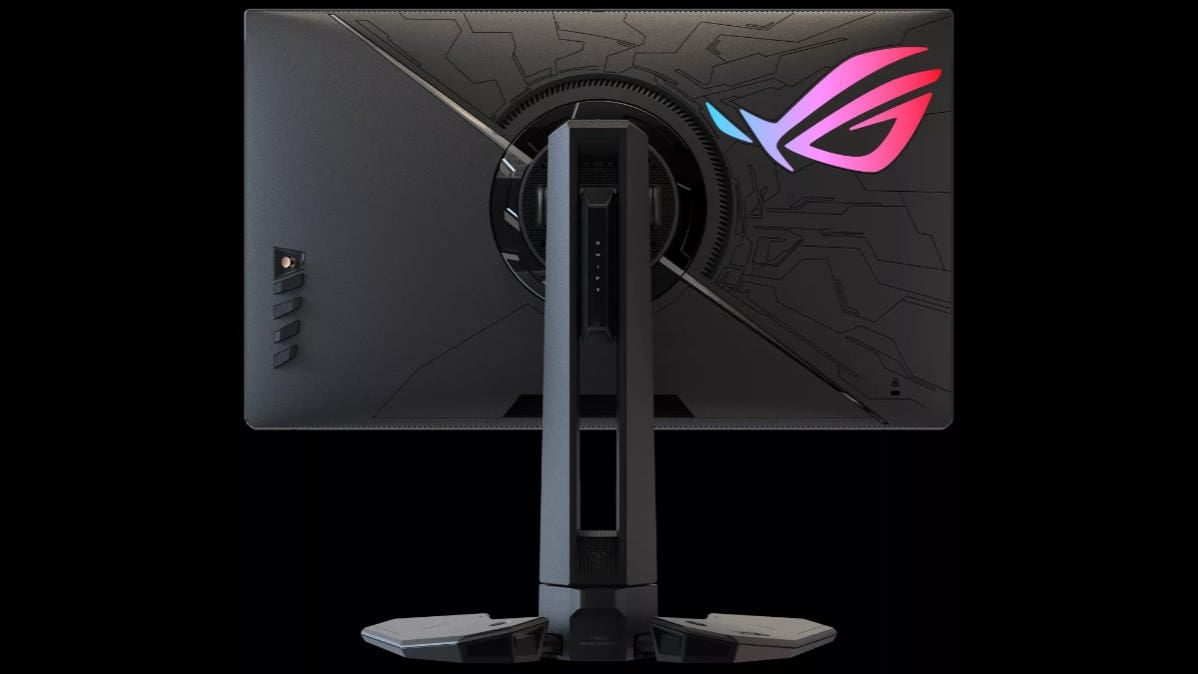
Monitors with refresh rates that range from 144Hz, 240Hz, 300Hz, and beyond are mostly aimed at competitive multiplayer gamers who play fast-paced titles. These monitors may not be worth it if you value image quality over raw frame rate.
If you’re looking for a new monitor you might be tempted to buy something with the highest refresh rate you can afford. But there are a few things you should consider before going all-out on 240Hz, 360Hz, and beyond.
What Is a Refresh Rate?
The refresh rate is the number of times that your monitor updates in a second, measured in hertz (Hz). A standard 60Hz monitor designed for desktop use in an office updates 60 times in a second, which is fast enough for most simple computer tasks. Most televisions also operate at 60Hz, though the new standard is twice as fast at 120Hz.
A monitor that refreshes at 120Hz displays twice as many images per second as one that refreshes at 60Hz. The term “high refresh rate” is open to interpretation, but generally speaking anything above 144Hz qualifies. It’s common to find gaming monitors with refresh rates of 165Hz, 175Hz, 240Hz, and higher.
The Best Gaming Monitors of 2022

Best Gaming Monitor Overall
LG Ultragear 27GP950-B
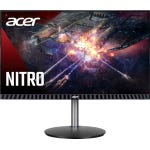
Best Budget Gaming Monitor
Acer Nitro XF243Y
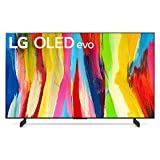
Best 4K Gaming Monitor
LG C2 Series 42-Inch Class OLED evo Gallery Edition Smart TV OLED42C2PUA, 2022 – AI-Powered 4K TV, Alexa Built-in
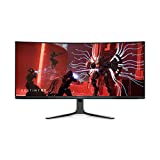
Best Curved Gaming Monitor
Dell Alienware AW3423DW
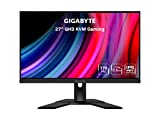
Best 144Hz Gaming Monitor
Gigabyte M27Q
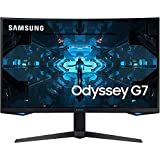
Best 240Hz Gaming Monitor
Samsung Odyssey G7
Why Buy a 144hz, 240hz, or 300hz Monitor?
The more frames that are displayed per second, the smoother motion appears on-screen. You’ll get more feedback about what’s happening in games, and the monitor will respond to your input quicker than lower refresh rate models. This improvement in refresh rate will also be visible on the desktop and when browsing the web.
Monitors that have both high refresh rates and high resolutions (like Gigabyte’s 4K M32U), demand a premium price, starting around $500 and going much higher from there. In contrast, you can pick up a 1080p or 1440p monitor with a refresh rate of 240Hz for far less than a 4K or ultrawide monitor that packs in more pixels—think $200.
The Best Ultrawide Monitors of 2022
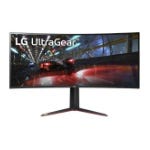
Best Ultrawide Monitor Overall
LG 38GN950-B
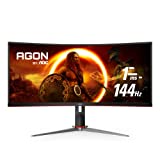
Best Budget Ultrawide Monitor
AOC CU34G2X
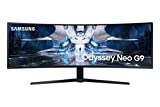
Best Curved Ultrawide Monitor
Samsung Odyssey Neo G9

Best Ultrawide Gaming Monitor
LG 34GP950G-B
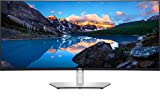
Best Ultrawide Monitor For Productivity
Dell UltraSharp U4021QW
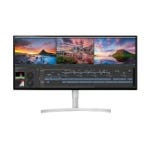
Best 4K Ultrawide Monitor
LG 34WK95U-W
You May Not Always Notice a Difference
When it comes to increasing refresh rate, you’re far more likely to notice a difference between 60Hz and 120Hz than you are going from 240Hz to 360Hz. The same is true of frame rate overall when you compare a legacy 30 frames per second experience with a 60 frames per second remaster. The benefits are far more clear at the low end of the spectrum.
Some even state that they can’t tell a difference between 60Hz and 120Hz, reaffirming the idea that a 60 frames per second target is “good enough” as a baseline for most gamers. Many prefer superior image quality using techniques like ray-traced shadows and global illumination in modern titles.
ASUS released the PG259QN in 2020, the world’s first 360Hz gaming monitor. Since then there has been a flurry of high refresh rate displays like the ViewSonic Elite XG250 (280Hz), MSI Oculux NX253R (360Hz), and Acer Nitro XV272U (300Hz), all marketed at the eSports crowd.
At the time, tech channel Linus Tech Tips decided to test which staff could tell the difference between the ASUS 360Hz monitor and several 240Hz monitors. Despite the small sample size, most couldn’t tell the difference between the two, and even those that managed to guess right described the difference as “subtle” and barely noticeable.
Higher refresh rates may make you a better gamer and give you the edge by providing smoother motion and more up-to-date feedback on what’s happening on-screen. But there’s arguably a limit at which point most who aren’t on the eSports circuit will notice a difference. Chasing ever-higher refresh rates is a game of diminishing returns.
What About 500Hz Monitors?
Nevertheless, at CES 2023, Alienware announced a 500Hz monitor, the AW2524H, and ASUS revealed the ROG Swift Pro PG248QP that can reach 540Hz in the right setting. Will you be able to notice a difference between 360Hz and 500Hz? Maybe. Is the price premium worth it for most people? Probably not. On top of this, there are some big trade-offs you’ll need to accept if you want to get past the 500Hz barrier.
Both only manage a resolution of 1080p, which is to be expected if you want to generate enough frames to take full advantage of them. Both use TN-type panels, also to be expected since TN panels offer faster response times at the cost of both viewing angles and color reproduction. These monitors prioritize motion handling over just about every metric, including overall image quality.
Unless you have a very specific use case in mind, even a 360Hz monitor may not be worth the cost. We’d recommend seeing these monitors in person to decide whether the price and trade-off in image quality are worth it. You’ll also need to make sure your computer is up to the task.
Higher Refresh Rates Demand Higher Frame Rates
There’s no point buying a high refresh rate monitor with a refresh rate of 240Hz or higher if you can’t produce 240 frames per second (or near enough) in the games that you want to play. The highest refresh rates are ideal for those who play competitive online games, where many players opt for lower graphical quality to get as many frames as possible.
If you don’t play these sorts of games, or you don’t have a beast of a system to run your favorite games at a frame rate that makes the most of your monitor’s refresh rate, buying the highest refresh rate monitor you can afford might not be worth it.
If you’re mostly playing single-player experiences, you might prefer a higher resolution and lower refresh rate. If you struggle to get above 120 frames per second in your favorite games, a modern 120Hz panel (like the 42-inch LG C2 OLED) will give you more bang for your buck. You might prefer better HDR visuals by opting for a monitor with great peak brightness to a more immersive single-player experience.
There’s always an argument to be made for overhead, i.e. buying a monitor with a higher refresh rate than you need right now with the intention of passing that threshold with a future upgrade. But games don’t necessarily work that way. We’re more likely to see higher-quality textures, better lighting, and more realistic reflections and shadows than big leaps in performance in the vast majority of games.
How Fast Is Too Fast?
Whether a refresh rate is “too fast” to justify the expense depends on two variables: your ability to perceive a higher refresh rate (ideally in a blind test), and how many frames your computer can produce in your games of choice. To fit the profile you’ll probably be playing fast-paced, competitive online games like Counter-Strike: Global Offensive and looking for any competitive edge regardless of the cost.
For now, higher refresh rate monitors demand a premium. One day, when 240Hz and higher monitors are as common as 60Hz monitors are today, it will be economical to buy something that seems overkill on paper.
Refresh rate isn’t the only measurement to consider when buying a monitor. You’ll also want to consider pixel response rate, pixel density, and how the monitor connects to your computer.
